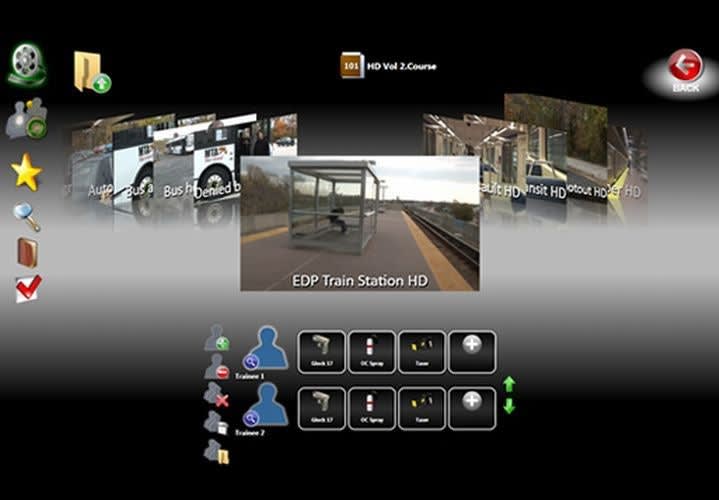The iMarksman from iSniper Inc. is a virtual target and dry fire practice system. It includes a sensor camera and tripod, dry fire laser inserts for weapons, software, and extra batteries, all for $999. To use the iMarksman for training, you will also need a computer, a digital projector, and a screen or a light-painted wall.
Of course for that price, you're not buying a Cadillac system. The iMarksman is not a video use-of-force sim. It's more like a Hogan's Alley kind of thing where the shooter has to make shoot/don't shoot decisions when presented with photo targets. Trainers can use background photos from their own jurisdictions so that the Hogan's Alley experience happens in the local bus station, bank, parking lot, etc. Probably the real training value of this system is that it can be used to show officers the path of their draw and the consistency of their trigger squeeze.
Meggitt Training Systems
The newest training sim from Meggitt is the Next Generation Virtual Training System (XVT). Meggitt's XVT is small enough to fit in the trunk of a patrol car but offers all the capabilities of the company's larger systems, including the BlueFire wireless weapon system.
Weighing 54 pounds, the compact XVT includes the projector, the scoring system, and the CPU. Trainers can set up the XVT on the floor or mount it on the ceiling of the training room. The system comes with 275 scenarios preloaded.













